
Cross-country skiing is a fun, low-cost way to stay active in winter. Unlike downhill skiing, it doesn’t need steep slopes or pricey lift tickets - just flat or rolling terrain. Cross-country skis are lightweight, narrow, and designed for gliding across snow, making them ideal for beginners, fitness enthusiasts, and outdoor adventurers. They’re easier to learn than alpine skiing, provide a full-body workout, and let you explore snowy trails, frozen lakes, or even backcountry areas.
If you’re new to skiing, shorter skis like the Snowfeet* NORDIC Cross-Country Skate Skis (90 cm) are a great option. They’re compact, easy to handle, and work with regular winter boots - no need for extra gear. Plus, they combine the benefits of classic and skate skiing, so you can try both styles without investing in multiple setups. At $350 for a complete system, they’re also more affordable than traditional cross-country setups, which can cost $430–$1,550+.
Key Points:
- Who it’s for: Beginners, fitness lovers, and adventurers.
- Why it’s great: Affordable, easy to learn, and doesn’t require special boots or lift tickets.
- Best option for beginners: Snowfeet* NORDIC skis - compact, lightweight, and versatile.
Want to stay active this winter without breaking the bank? Cross-country skiing might just be your new favorite sport. :)
Cross-Country Ski Features and Design
Cross-Country vs Alpine Ski Design
Cross-country and alpine skis are built with very different goals in mind, and their designs reflect this. Alpine skis are typically wider, heavier, and shorter, designed for stability and control on steep slopes. On the other hand, Nordic skis are all about efficiency and mobility. A key difference lies in the binding systems - cross-country skis use bindings like the NNN and SNS systems, which attach only at the toe. This allows for the natural kick-and-glide motion that defines cross-country skiing. In contrast, alpine bindings lock in the entire boot for stability during downhill runs.
Boots also differ significantly. Cross-country boots are lightweight and flexible, resembling athletic shoes with specialized binding attachments. Alpine boots, however, are rigid and built for precise control. Even the poles are distinct - Nordic ski poles are longer to help with balance and propulsion during gliding. These thoughtful design differences make cross-country skiing more accessible and enjoyable, especially for beginners.
Why Shorter Skis Are Better for Beginners
For those new to cross-country skiing, shorter skis can make all the difference. Traditional Nordic skis, with their longer length, can be tricky to handle and require more effort to control. Shorter skis, like the Snowfeet* NORDIC Cross-Country Skate Skis (90 cm or about 35 inches), solve this problem. Their compact size makes them easier to maneuver and helps improve balance. Beginners can focus on developing their skills without the frustration of managing unwieldy skis. This design also makes it simpler to navigate tight corners on trails, giving newcomers a confidence boost as they learn the basics.
The Fun Factor: Why Shorter Skis Are a Game-Changer
Gone are the days when longer skis were the default choice. Shorter cross-country skis are proving to be more versatile and fun, whether you're gliding along groomed trails or exploring backcountry routes. The Snowfeet* NORDIC design is a great example of this shift. At just 90 cm (around 35 inches), these skis are lightweight and easy to carry, but still tough enough for a solid workout. Features like metal edges for better control and a fishscale base that eliminates the need for kick wax add to their appeal. Plus, you can use regular winter shoes with certain bindings, making it easier for families and casual skiers to join in.
Customers consistently praise how these shorter skis make cross-country skiing more approachable and enjoyable. They’re not just easier to use - they also open up a more flexible and fun way to experience the sport.
How to Cross Country Ski: A Beginner’s Guide - Part 1 | PSIA-AASI
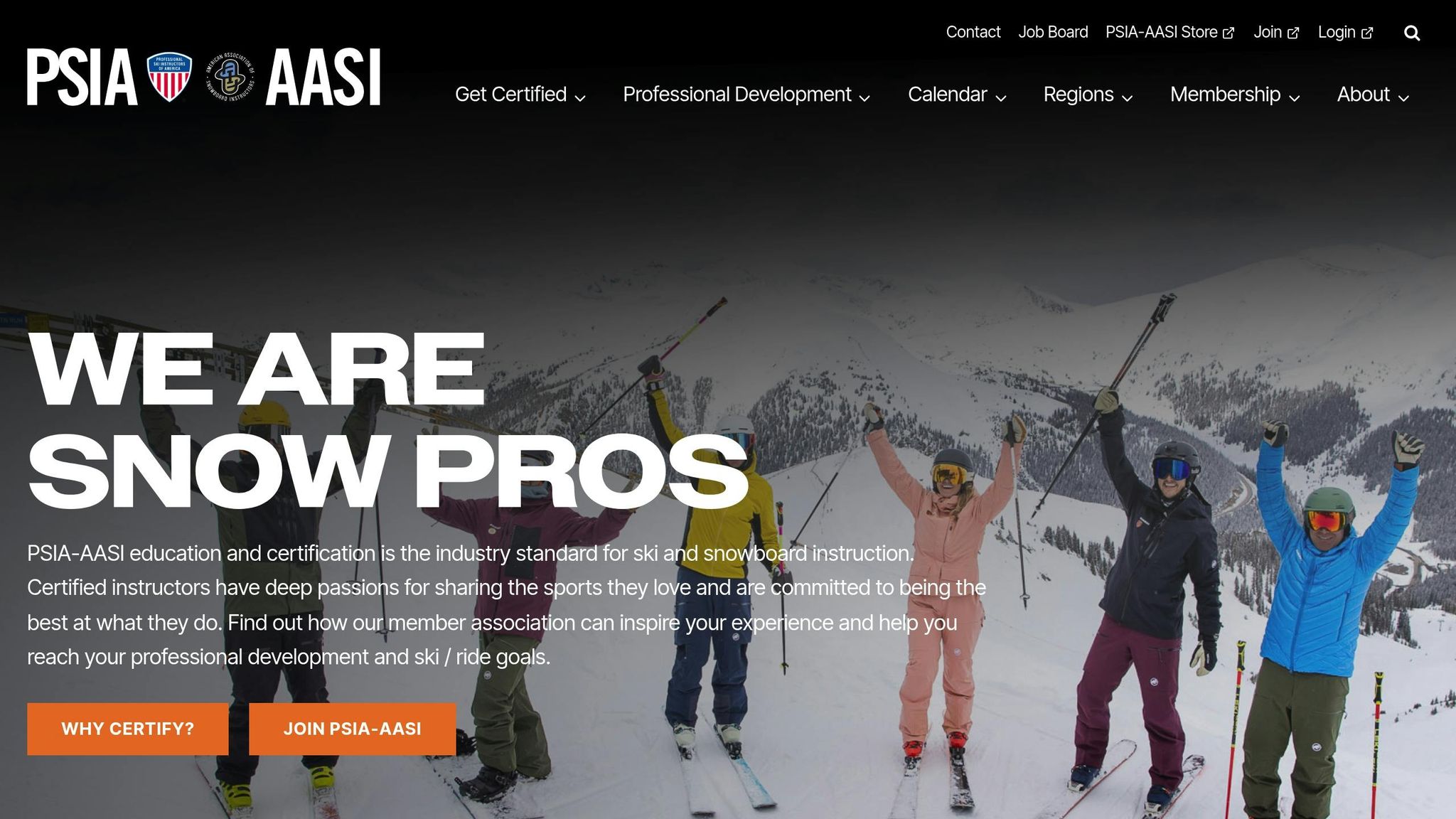
Types of Cross-Country Skis
Take a closer look at the different types of cross-country skis and see how Snowfeet* NORDIC brings something fresh to the table in each category.
Classic Cross-Country Skis
Classic cross-country skis are what most people picture when they think of traditional skiing. These are designed for groomed trails and follow a diagonal stride technique - imagine a kick-and-glide motion that feels like walking or running in a straight line. To keep you moving forward without slipping backward, they feature a grip zone with fish scales, skins, or even special wax.
These skis are longer than others, helping you glide efficiently on groomed tracks. The boots for classic skiing have a soft outsole and low cuffs, making them comfortable even on long outings. Poles are shorter compared to those used in skate skiing.
Classic skis are great for beginners or anyone looking for a steady, full-body workout. They’re perfect for developing technique and building fitness at your own pace. But if speed and agility are more your style, there’s another option to consider.
Skate Cross-Country Skis
Built for speed and performance, skate skis are the choice for those who love an athletic challenge. These skis are shorter, stiffer, and designed for groomed skate decks. Instead of the straight-ahead motion of classic skiing, skate skiing uses a side-to-side V1 skating technique, much like ice skating.
One key difference? Skate skis don’t have a grip zone. Their smooth base allows for the fluid side-to-side motion that defines this style. The boots are more rigid, with higher cuffs for added ankle support, and the poles are longer to match the skating motion.
It’s a faster, more dynamic way to ski, but it does demand a higher level of fitness and skill. Skate skiing is especially popular among competitive skiers and those who thrive on a physical challenge. Keep in mind, though, these skis aren’t designed for classic skiing since they lack the grip zone needed for that technique.
For those who prefer venturing off the beaten path, there’s an entirely different design waiting for you.

view-product
Backcountry Cross-Country Skis
If you’re drawn to untouched winter landscapes, backcountry skis are your go-to. These skis are wider than traditional track skis, which gives you better stability in deep, untracked snow. That extra width helps you float on powder and navigate rugged, ungroomed terrain with ease.
Many backcountry skis also feature metal edges, which improve control on icy surfaces but do add some weight. Their sturdy build makes them ideal for adventurers looking to explore remote trails and wild winter areas.
Backcountry skis are perfect for those who love winter hiking or want to combine the thrill of skiing with the adventure of exploring off-trail terrain. They’re all about freedom and discovery.
Snowfeet* NORDIC: The All-in-One Solution
While traditional cross-country skis each excel in their specific niche, Snowfeet* NORDIC takes things to a whole new level by blending versatility with convenience. These compact skis, just 90 cm (35 inches) long, break the mold by combining the best of classic, skate, and backcountry skiing into one innovative design.
At this size, they’re incredibly portable - easy to stash in a backpack or the trunk of your car. Plus, they’re compatible with regular winter shoes, so you don’t need to invest in specialized boots for each skiing style. This makes them a game-changer for families, casual skiers, or anyone who wants a no-fuss option.
Snowfeet* NORDIC lets you switch seamlessly between styles. Whether you’re gliding along a groomed trail, trying your hand at skate skiing, or tackling backcountry terrain, these skis adapt to your adventure. They’re especially handy for beginners curious about different skiing techniques or for travelers who need gear that works in a variety of winter conditions. It’s skiing made simple, without sacrificing the fun.
sbb-itb-17ade95
Who Should Use Cross-Country Skis?
Cross-country skiing attracts a diverse crowd - from total newbies to hardcore fitness lovers. The best part? You don’t need pricey lift tickets or perfect snow conditions to enjoy it. Let’s dive into who benefits most from this activity and why Snowfeet* NORDIC could be the perfect way to get started.
Beginners: A Friendly Way to Ski
If the steep slopes and speed of downhill skiing feel intimidating, cross-country skiing offers a gentler entry into the world of skiing. It’s often easier to learn than alpine skiing, and you’re in control of your speed and direction from the get-go.
"Cross-country skiing will get you in shape and teach you balance, motion on skis, how to be sensitive to the snow, the skis, poles and your entire body, and develop good gliding, skating, edging and . . . BALANCE."
– Richard Culpeper, Canadian National Telemark Ski Team
Beginners can start with short, easy trails, and mastering the basics - like gliding on flat terrain - is straightforward since you control the pace. Plus, Nordic ski boots are way more flexible and comfy than their alpine counterparts. They only attach at the toe, giving you a natural range of motion. Cross-country skiing is suitable for all ages and fitness levels, and many local parks or communities even have groomed trails to get you started.
For beginners, Snowfeet* NORDIC skis are a game-changer. At just 90 cm (35 inches), they’re forgiving, easy to handle, and work with your regular winter boots - no need for specialized gear. They’re perfect for easing into the sport while still offering a solid workout for those looking to push themselves.
Fitness Enthusiasts: A Full-Body Workout
Cross-country skiing isn’t just fun - it’s a killer workout. An intense session can burn up to 1,122 calories an hour, while a moderate pace can still torch 600–900 calories. To put it in perspective, you’ll burn more in one hour of cross-country skiing than in 2.5 hours of downhill skiing.
"Nordic skiing can be one of the most intense, demanding activities you can do... You're using the muscles of your upper back, your triceps, your shoulders, your deltoids. You have to stabilize with all your core muscles. And then, in addition to that, you're using all of your hip flexors and lower legs."
– John Holash, professor of health and human performance
What makes it even better? It’s low-impact, so it’s gentle on your joints. Whether you’re a runner, cyclist, or just looking to stay active, cross-country skiing is an excellent way to boost your cardio and mix up your routine.
Snowfeet* NORDIC skis are perfect for fitness lovers, too. They’re shorter and lighter than traditional cross-country skis, so you can focus on your workout without wrestling with bulky equipment. Plus, they perform well on both groomed and ungroomed trails, giving you the flexibility to switch up your routine.
Outdoor Adventurers: Embrace the Winter Wilderness
For those who love exploring, cross-country skiing unlocks winter landscapes that are often off-limits. Unlike downhill skiing, which keeps you confined to marked runs, cross-country skiing lets you roam through forests, meadows, and even backcountry trails.
Snowfeet* NORDIC skis take this freedom to the next level. They’re lightweight, portable, and easy to carry - perfect for adventures beyond groomed trails. Their compact size makes them ideal for navigating tight forest paths or taking shortcuts through the trees. And since they’re compatible with regular winter boots, you can pack lighter and move more freely.
With metal edges for better control and easy stopping, Snowfeet* NORDIC skis are designed for adventurers looking to explore varied terrain without the hassle of traditional gear.
Standard Cross-Country Skis vs. Snowfeet* NORDIC Comparison
| Feature | Traditional Cross-Country Skis | Snowfeet* NORDIC |
|---|---|---|
| Length | 150–200 cm (varies by height) | 90 cm (35 inches) |
| Weight | Heavier, harder to carry | Lightweight and portable |
| Boot Compatibility | Requires specialized XC boots | Works with regular winter shoes |
| Learning Curve | Moderate to steep | Easy for beginners |
| Terrain Versatility | Specific to ski style (classic/skate) | Adaptable to all terrain types |
| Portability | Requires roof racks or long bags | Fits in a backpack |
| Storage | Needs significant space | Compact storage |
| Price Range | $200–$800+ (plus boots, bindings) | $350 complete system |
| Maneuverability | Limited in tight spaces | Excellent in all conditions |
This table highlights why Snowfeet* NORDIC skis appeal to such a wide audience. With a 5.00 out of 5 rating based on 7 reviews, users rave about their ease of use and flexibility.
While brands like Rossignol, Atomic, and Salomon offer high-quality skis tailored to specific styles, they often require extra investments in boots, bindings, and poles. On the other hand, Snowfeet* NORDIC simplifies the experience, making it a fantastic option for everyone - from beginners to seasoned pros, and even kids. It’s a great choice for families or groups with mixed skill levels, letting everyone enjoy cross-country skiing without the hassle of specialized setups.
How to Choose the Right Cross-Country Skis
Picking out cross-country skis can feel a bit daunting with all the options out there. But don't worry - if you focus on your skill level, terrain, skiing style, and budget, you'll find the perfect pair. Let’s break it down.
What to Consider When Buying Skis
Start with Your Skill Level
If you're a beginner, prioritize skis that are easy to use over high-tech features. New gear is often the way to go since evaluating used equipment can be tricky without experience.
Think About the Terrain
Where do you plan to ski most often? Whether it’s groomed trails or backcountry paths, your choice of skis should match the conditions you’ll face.
Match Your Skiing Style
Classic cross-country skiing involves a straightforward, walking-like motion on set tracks, while skate skiing has a more dynamic, side-to-side movement on wider trails. Your style will heavily influence the type of skis you need.
Factor in Your Budget
Cross-country skiing is generally more affordable than other winter sports, but costs can add up when you include skis, boots, bindings, and poles. Plan your budget accordingly.
Why Snowfeet* NORDIC Is a Game-Changer
Snowfeet* NORDIC skis offer something different. These 90 cm (35-inch) skis are designed to work for both classic and skate skiing, giving you flexibility without forcing you to choose one style over the other.
Versatile for Any Trail
Whether you're on groomed tracks or venturing onto ungroomed terrain, Snowfeet* NORDIC skis adapt to your needs. You can start with easy trails and progress to more challenging ones without needing to upgrade your gear.
Paul DeCecco from Colorado Springs shared his thoughts after trying them in February 2024:
"We both love the size and our increase flexibility to move as we need due to the size. We were on a trail that was not groomed and look forward to the next time we get out to try them on a groomed trail."
No Need for Specialized Boots
Traditional cross-country setups often require pricey boots that only work with specific bindings. Snowfeet* NORDIC skis, however, are compatible with any winter boots, making them a more accessible option.
A Smooth Learning Curve
Martina MacLean from Bailey shared her experience after using Snowfeet* NORDIC skis:
"For someone who hasn't been on XC skis in 40 years, purchasing these shorter Nordic Snowfeet has been very exciting! ... It didn't take long to get used to these shorter skis, much easier than the original longer XC skis I used to own a long time ago! The best part is we can use any shoe and anyone who wants to try them Can!"
Customer-Approved
With a perfect 5.00 out of 5 rating based on 7 reviews, Snowfeet* NORDIC skis have earned high praise from users. That kind of feedback speaks volumes.
US Buyers Guide: Pricing and Where to Buy
Here’s what you need to know if you’re in the U.S.
How They Stack Up Price-Wise
At $350 for the complete system, Snowfeet* NORDIC skis are a solid deal. Let’s compare:
- Traditional Cross-Country Skis: $200–$800+ (just for the skis)
- Specialized Boots: $150–$400
- Bindings: $50–$150
- Poles: $30–$100
- Total Traditional Setup: $430–$1,550+
Snowfeet* NORDIC skis include everything you need, so there’s no need to buy extra gear.
Where to Buy
You can order Snowfeet* NORDIC skis directly from snowfeetstore.com. They ship across the U.S., making it easy to get your gear delivered to your doorstep.
What’s in the Box
Your purchase comes with pre-mounted bindings, so you can use them right out of the box. Since they work with regular winter boots, you can hit the trails as soon as they arrive.
Support and Returns
Snowfeet* offers excellent customer support, backed by over 5,500 verified reviews across their product lines. This ensures peace of mind when ordering online.
While brands like Rossignol, Atomic, and Salomon are great for experienced skiers who know exactly what they want, Snowfeet* NORDIC skis offer a simpler, more affordable option for those who want to enjoy cross-country skiing without the hassle of traditional setups.
Conclusion
Cross-country skiing is more than just a winter activity - it’s a fantastic way to stay fit while enjoying the great outdoors. It’s a low-impact sport that’s easy on your joints but still gives your upper body a solid workout. Plus, it burns a ton of calories per hour, making it a top-notch cardiovascular exercise. Randy Clark, exercise laboratory manager at UW Health's Pediatric Fitness Clinic, even calls it “the best cardiovascular exercise known”. And let’s not forget the mental perks: it’s a great stress reliever and a perfect way to connect with nature during those chilly months.
Enter Snowfeet* NORDIC Cross-Country Skate Skis, a game-changer for anyone looking to simplify their skiing experience. These 35-inch skis are compatible with any winter boots, support both classic and skate skiing styles, and come in at $350 for a complete setup. That’s a fraction of the cost compared to traditional gear from brands like Rossignol or Atomic, which can total anywhere from $430 to over $1,550 when you factor in specialized boots, bindings, and poles. Users also love how much easier these shorter skis are to pick up compared to the longer, traditional ones, all while delivering the same great cross-country experience.
Cross-country skiing is not only a fun way to stay active but also an eco-friendly choice for winter fitness. And with Snowfeet* NORDIC skis, you can skip the hassle and expense of traditional setups. Whether you’re out there torching calories, boosting your cardiovascular health, or simply having a blast in the snow, Snowfeet* makes it easier than ever to embrace winter and all it has to offer.

FAQs
What’s the difference between classic and skate cross-country skiing, and how do Snowfeet* NORDIC skis work for both?
Cross-country skiing comes in two main styles: classic and skate. Each has its own technique and gear. Classic skiing feels like a natural walking motion, using longer and more flexible skis to balance grip and glide. Skate skiing, on the other hand, is more dynamic, resembling ice skating, with shorter and stiffer skis designed for lateral pushes.
Here’s where Snowfeet NORDIC skis* stand out - they’re built to handle both styles effortlessly. Their lightweight, compact design pairs with any winter shoe, making them super convenient. Whether you’re striding in classic mode or skating over packed snow, these skis bring unmatched versatility. Unlike traditional options from brands like Rossignol or Atomic, Snowfeet* NORDIC skis are portable and beginner-friendly, offering an easy and adventurous way to dive into cross-country skiing.
How are Snowfeet NORDIC skis better suited for beginners compared to traditional cross-country skis?
Snowfeet NORDIC skis are a fantastic pick for beginners, offering a lightweight, easy-to-use, and budget-friendly alternative to traditional cross-country skis. Priced around $390, they save you from spending extra on specialized ski boots since they’re designed to work with your regular winter shoes. This makes them a great choice for anyone starting out or looking to keep costs down.
Compared to traditional skis from brands like Rossignol or Atomic - which tend to be longer, bulkier, and require additional gear - Snowfeet NORDIC skis stand out for their compact and portable design. They’re perfect for casual skiers or anyone who wants to enjoy winter adventures without the hassle of heavy equipment, complex setups, or a steep learning curve.
Can Snowfeet* NORDIC skis handle ungroomed trails or backcountry terrain, and what makes them a good choice for these conditions?
Yes, Snowfeet NORDIC skis* are built to handle both groomed trails and light backcountry terrain with ease. Thanks to their built-in metal edges, they provide solid grip and control, even on uneven or ungroomed snow. Plus, their wider and sturdier design adds extra stability, making them a dependable choice for venturing off the beaten path.
These skis are perfect for beginners and intermediate skiers looking for a versatile option. Whether you're cruising on groomed trails or exploring light backcountry routes, Snowfeet* NORDIC skis offer a smooth, reliable ride in all kinds of conditions.

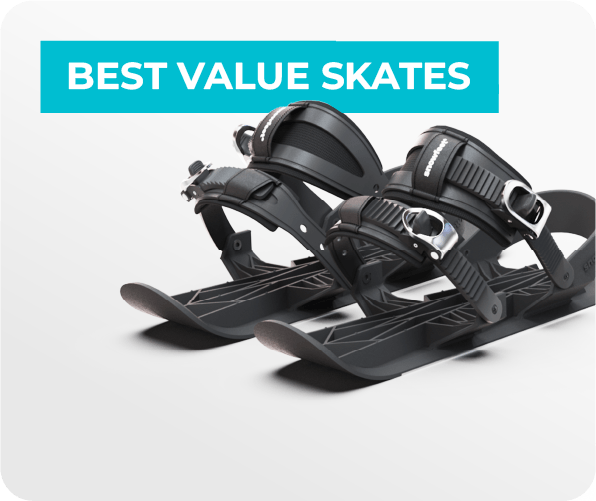
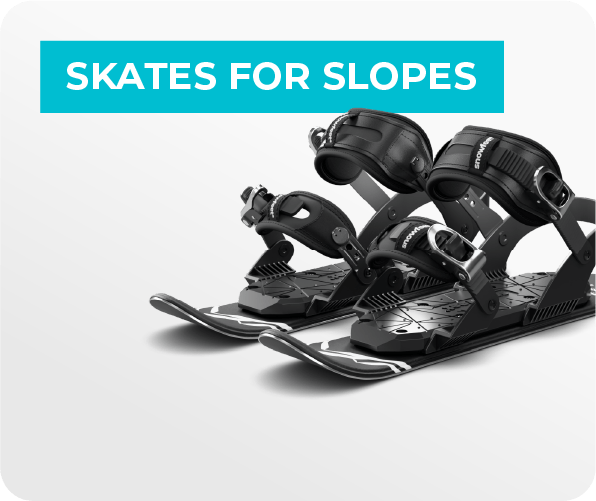
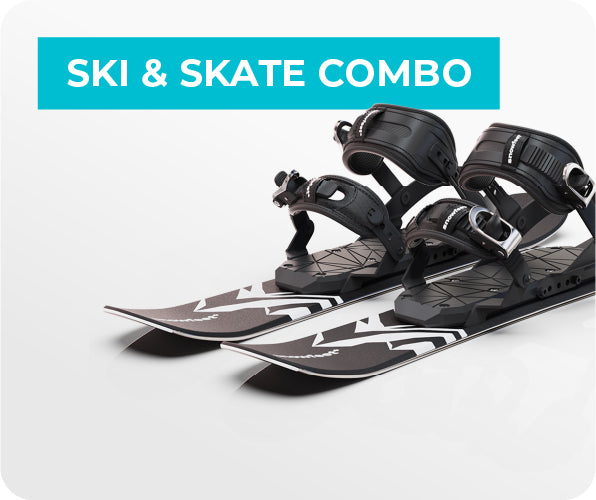
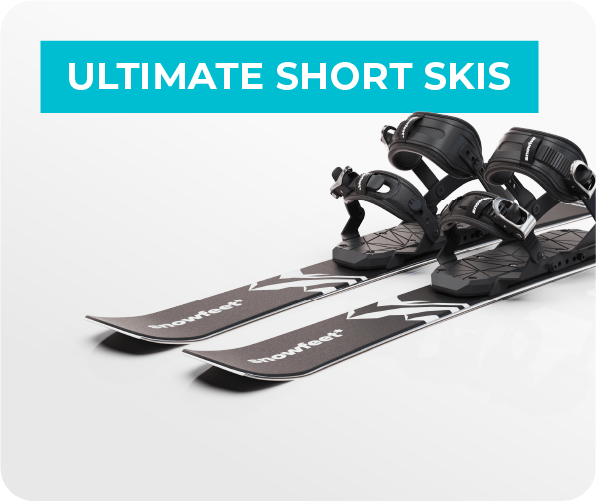
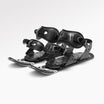
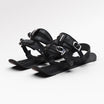
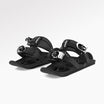
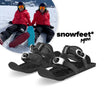
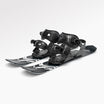
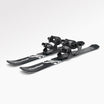
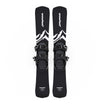
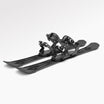
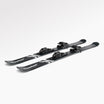
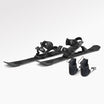

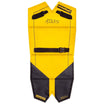
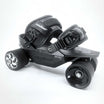

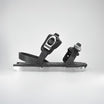
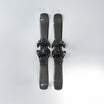
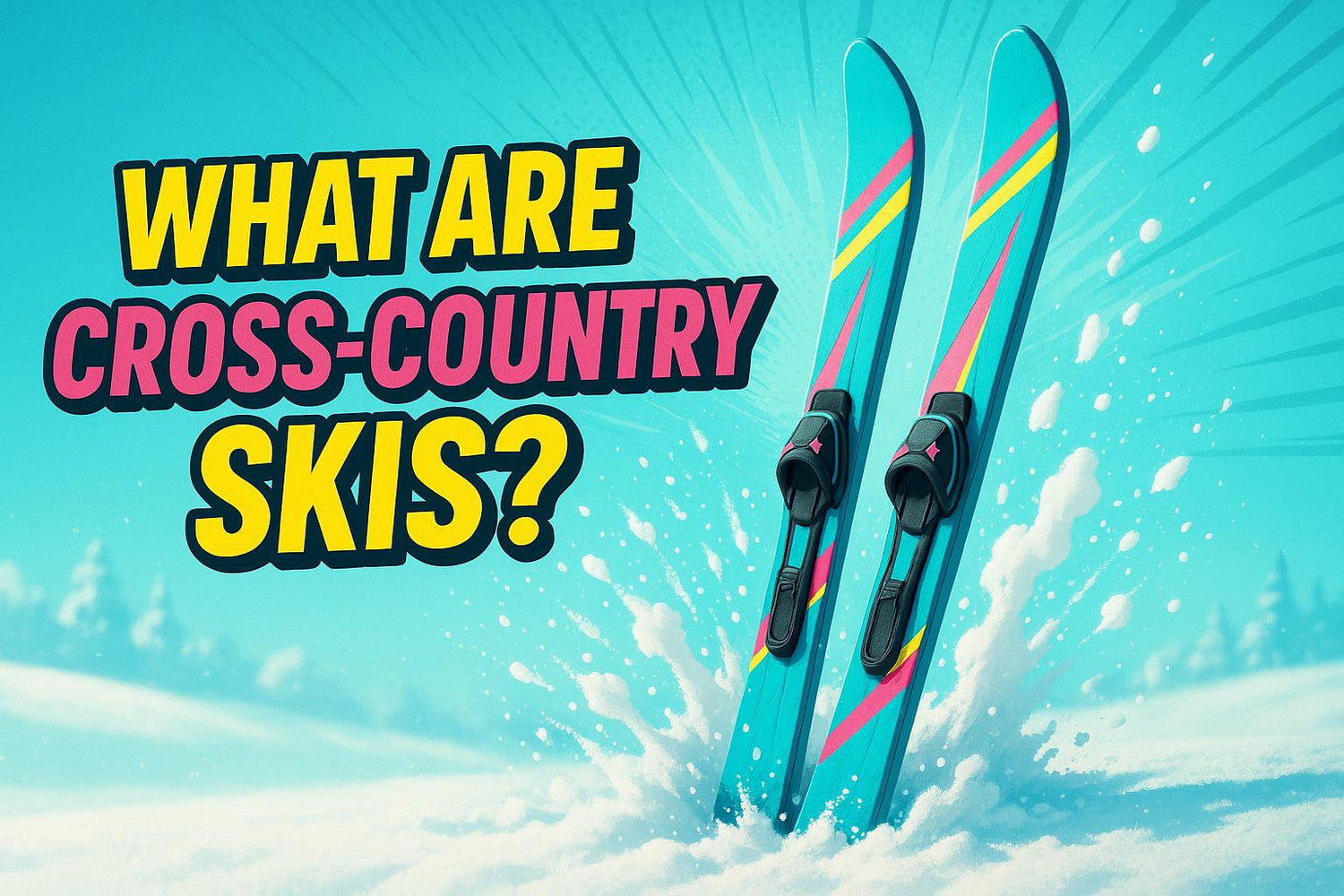

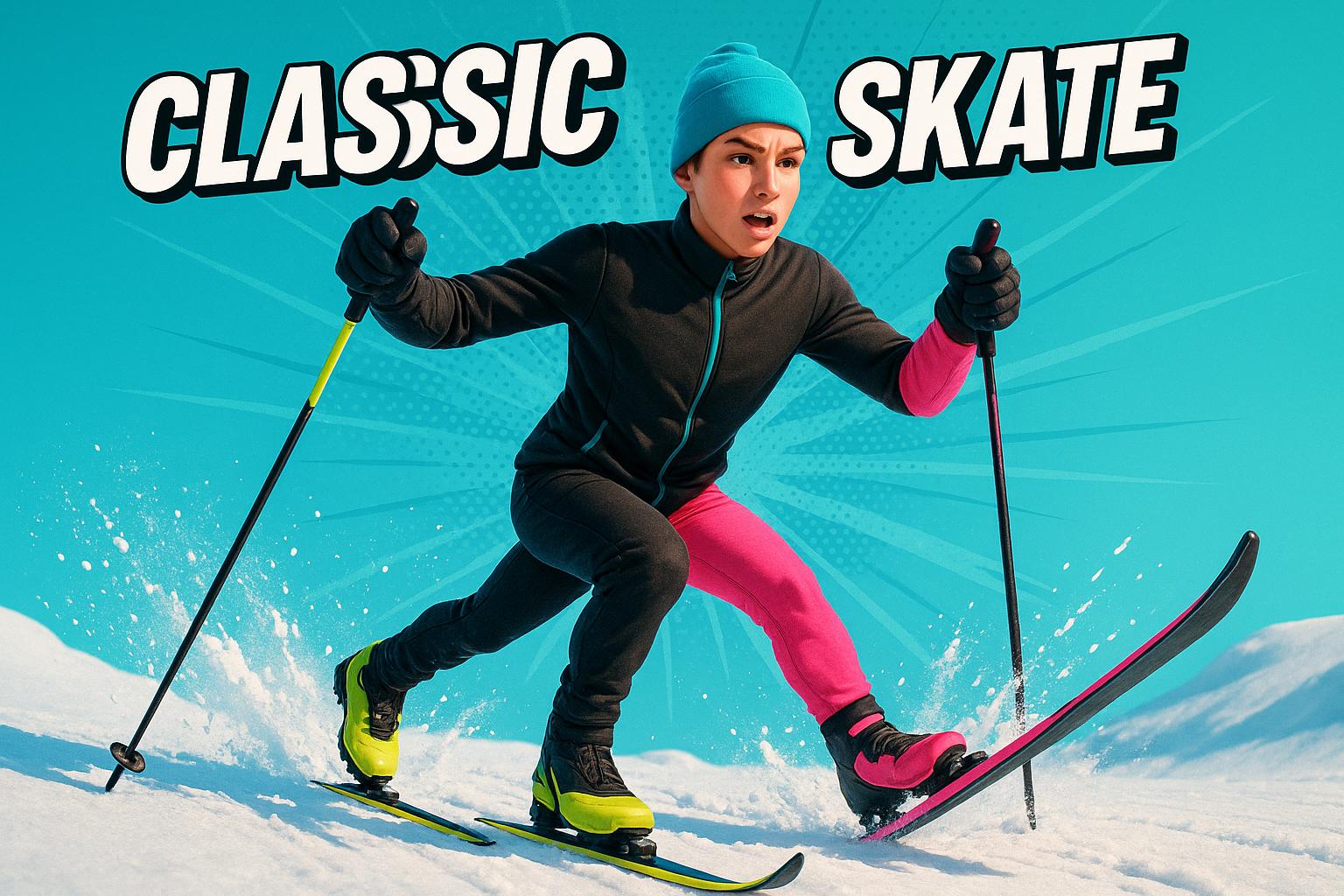
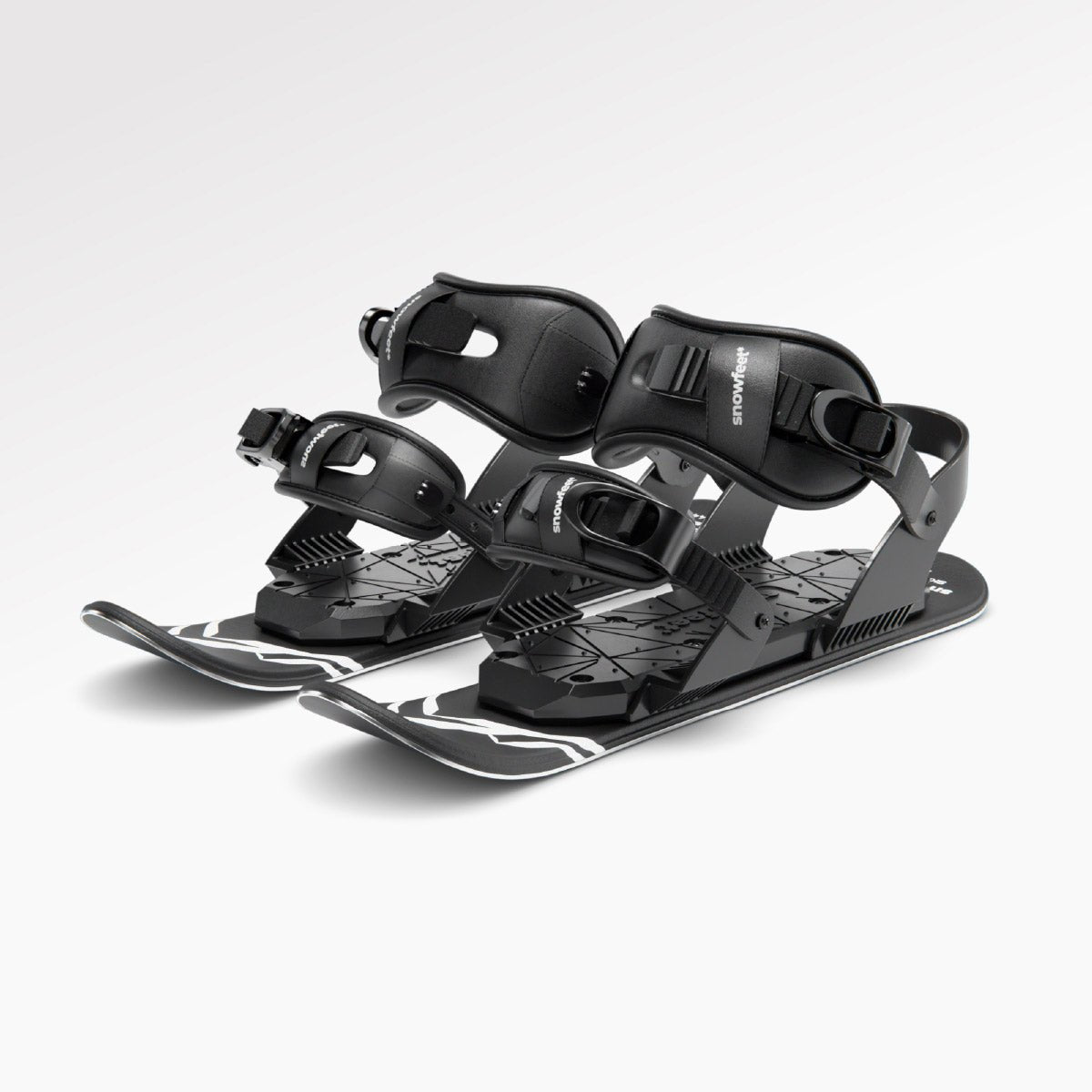
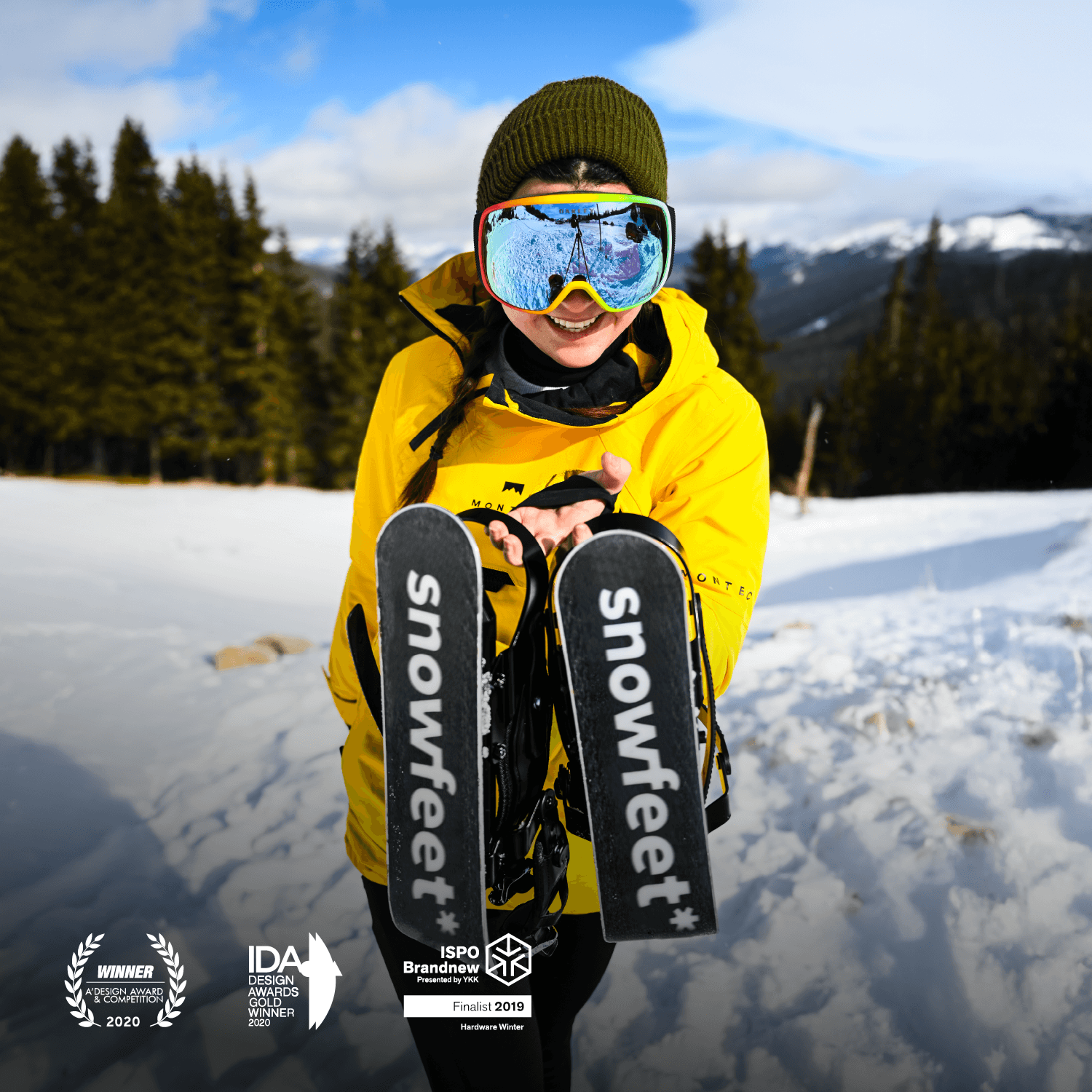
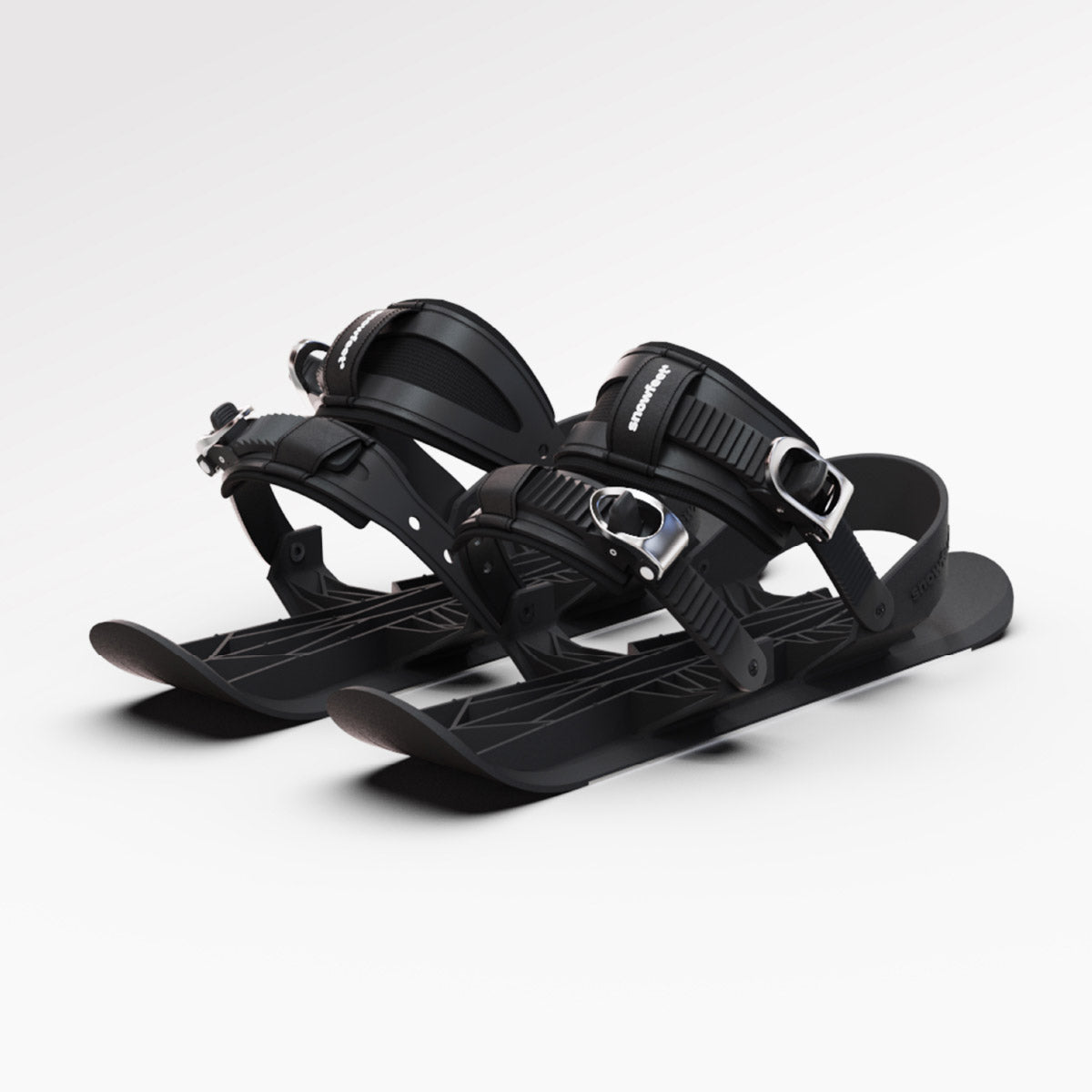
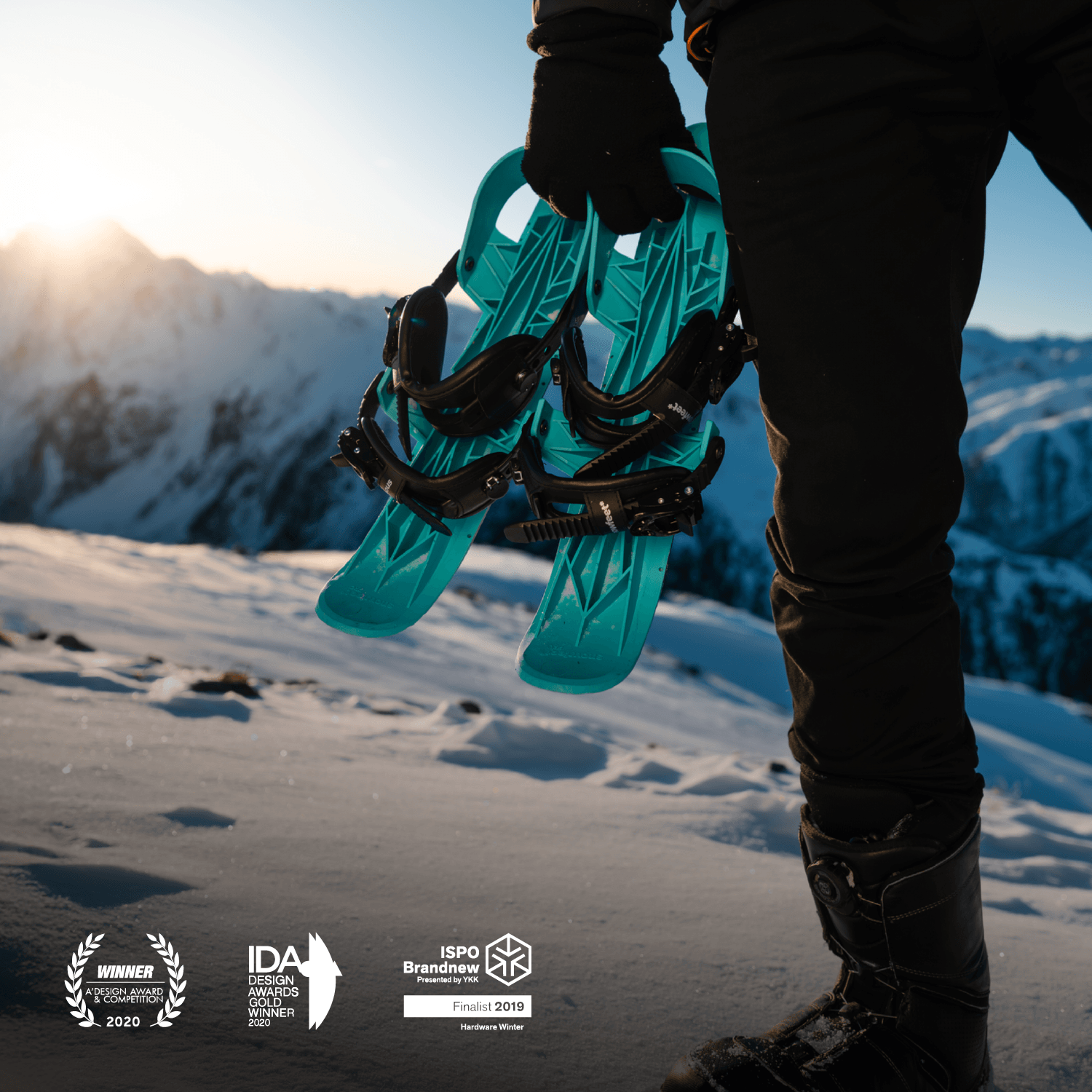
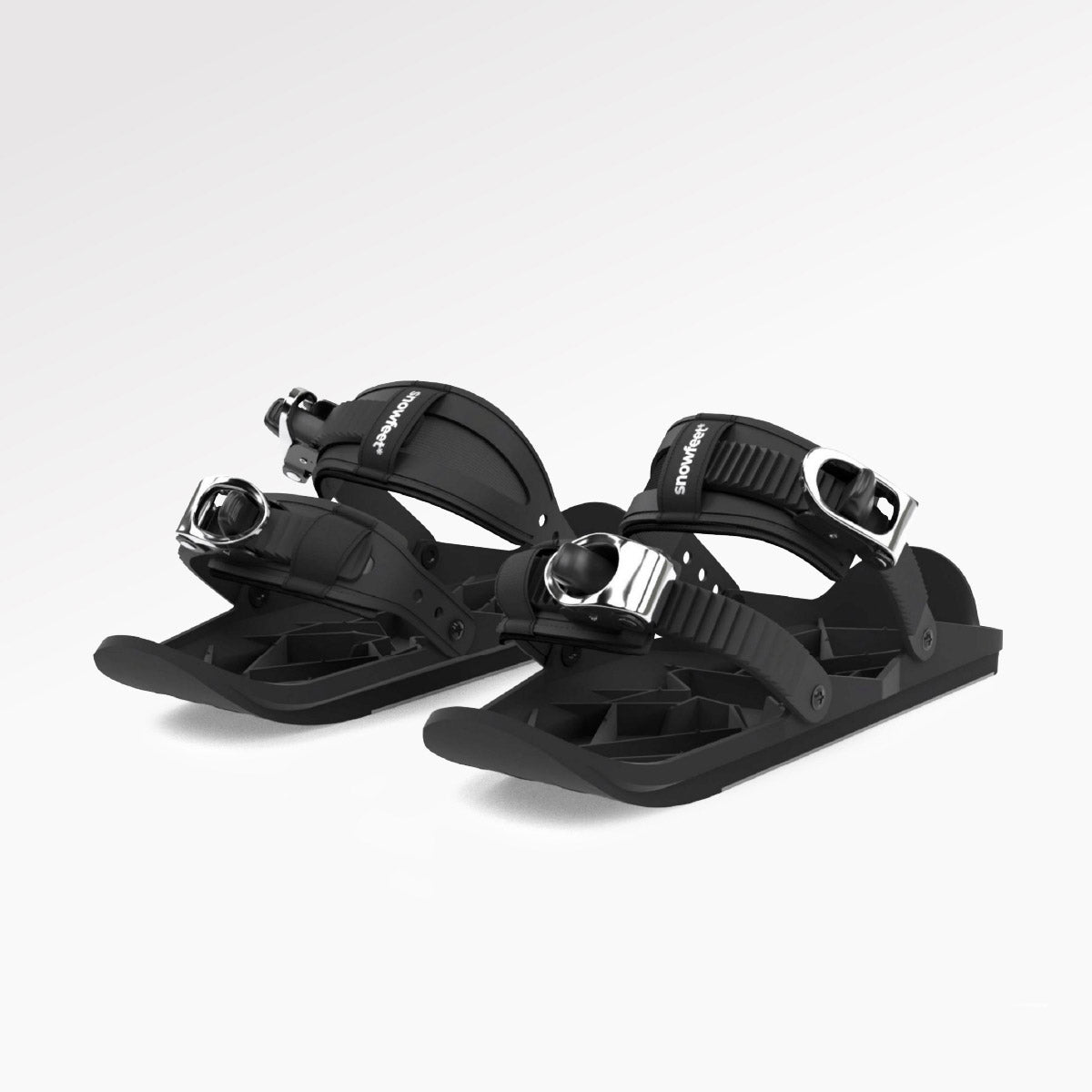
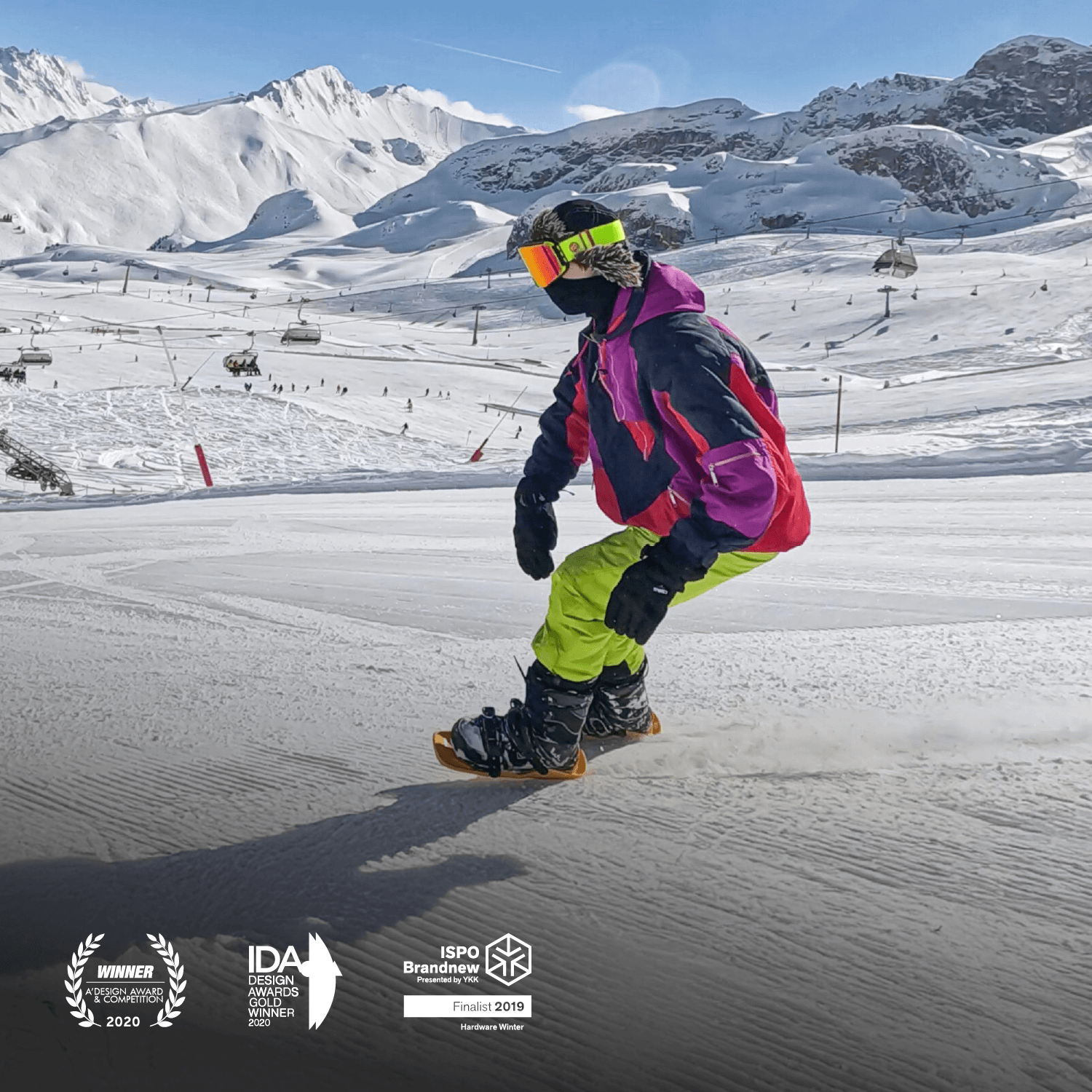
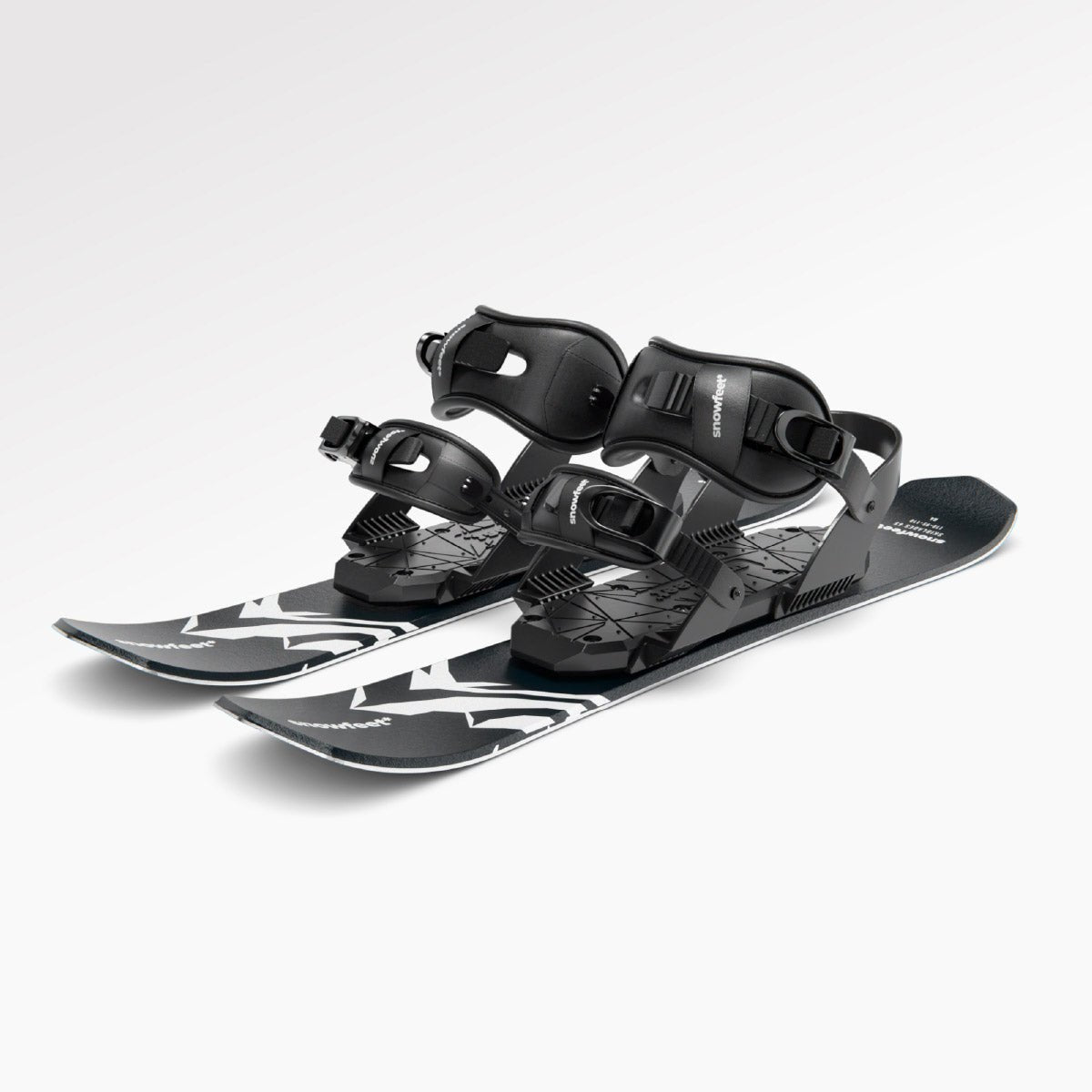
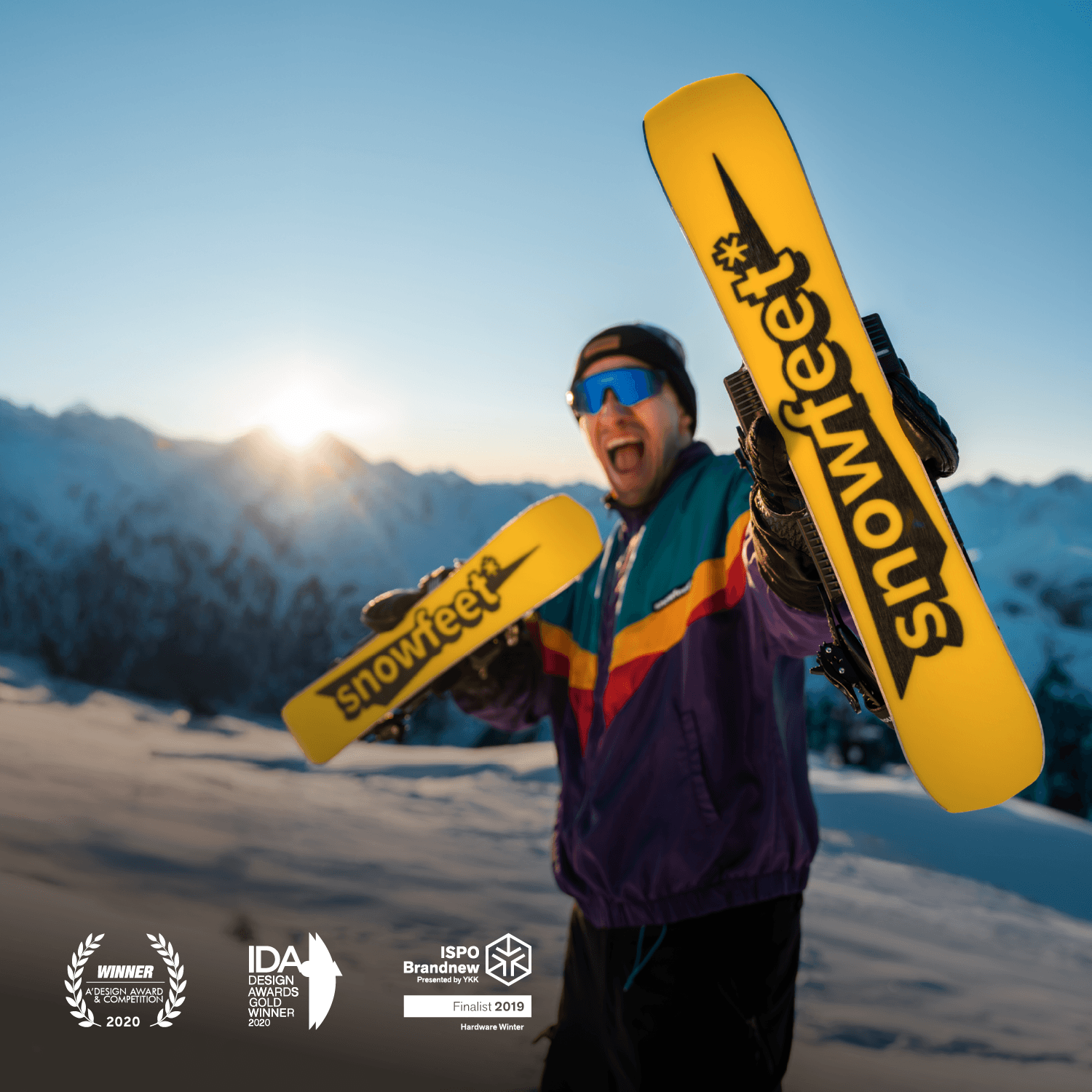
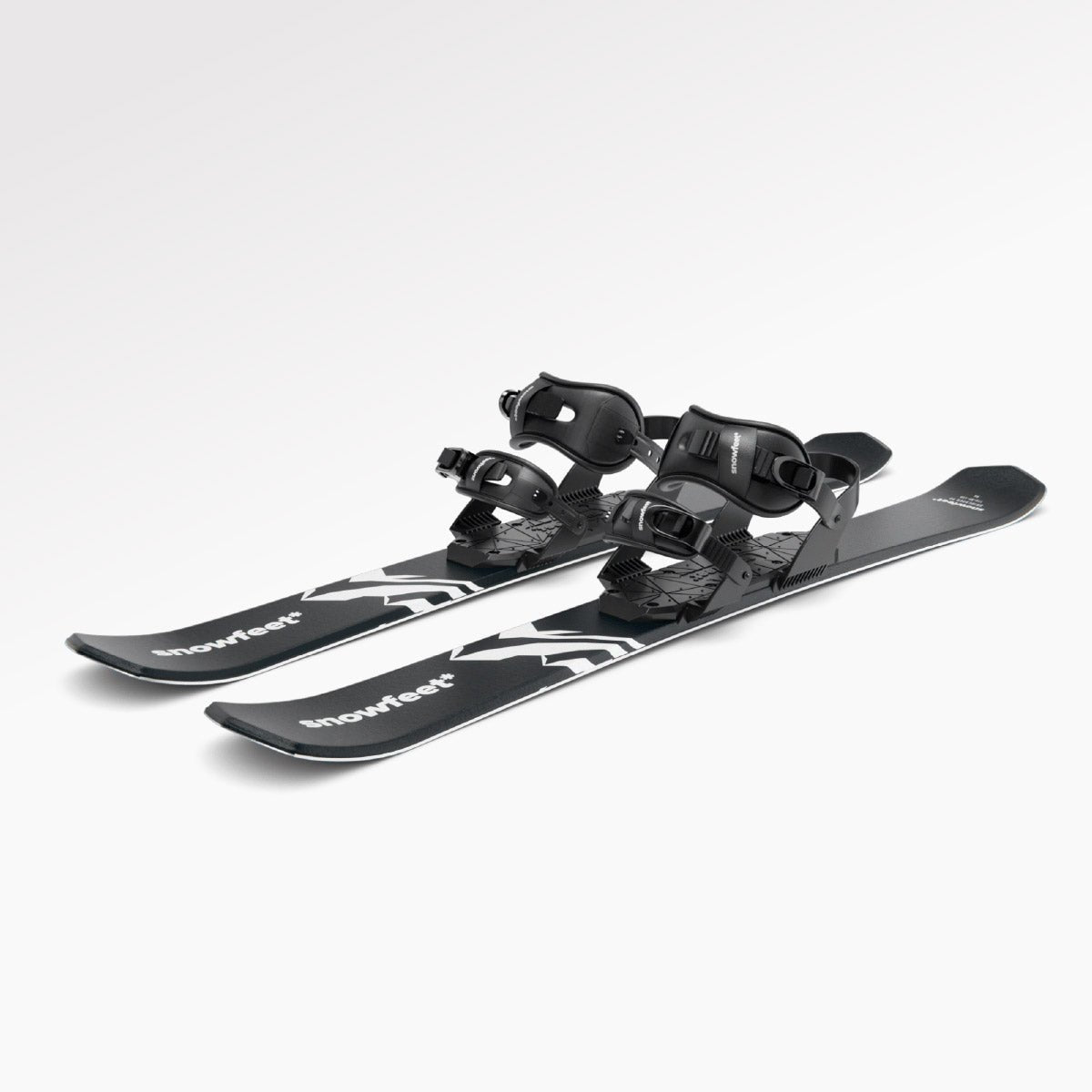
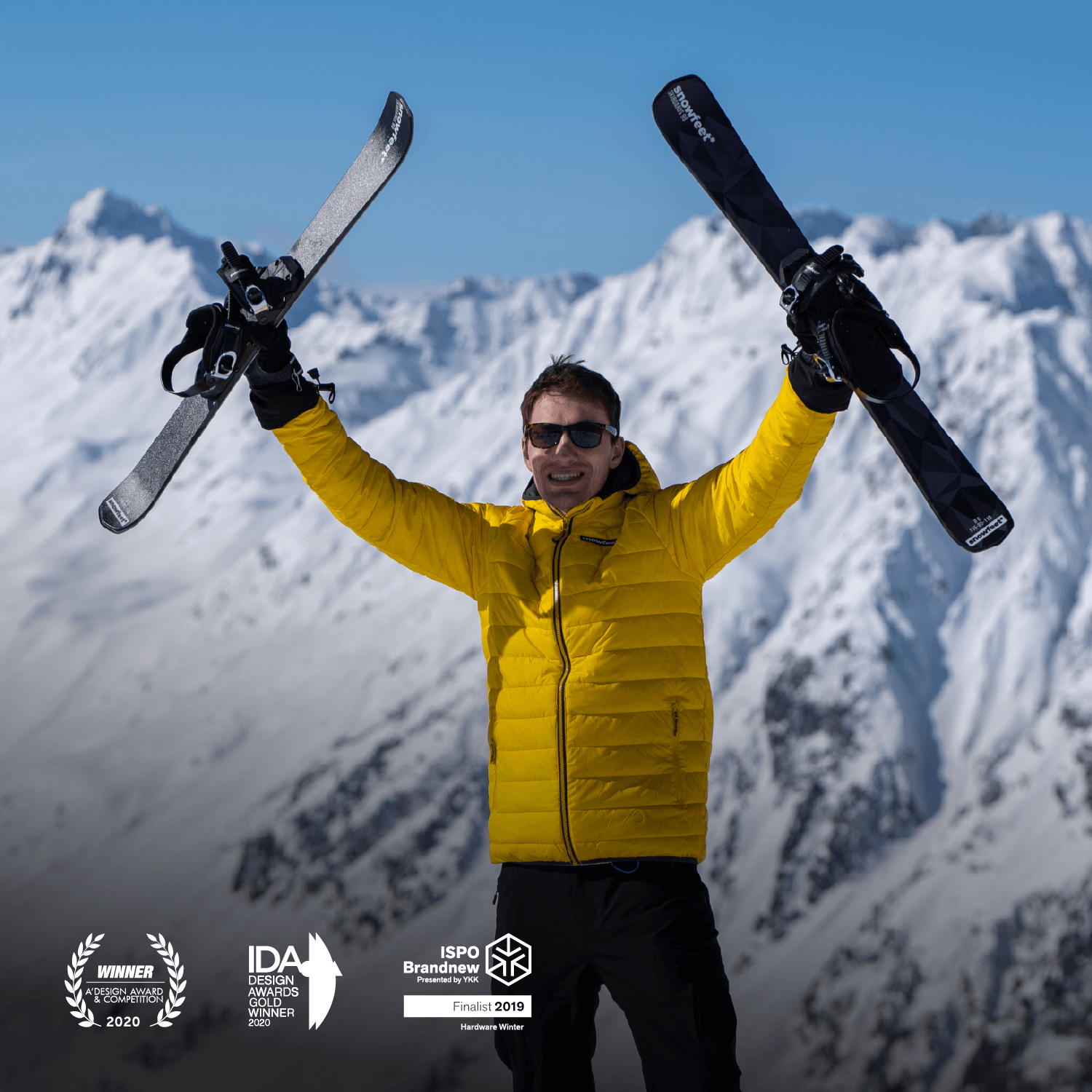
Leave a comment
This site is protected by hCaptcha and the hCaptcha Privacy Policy and Terms of Service apply.